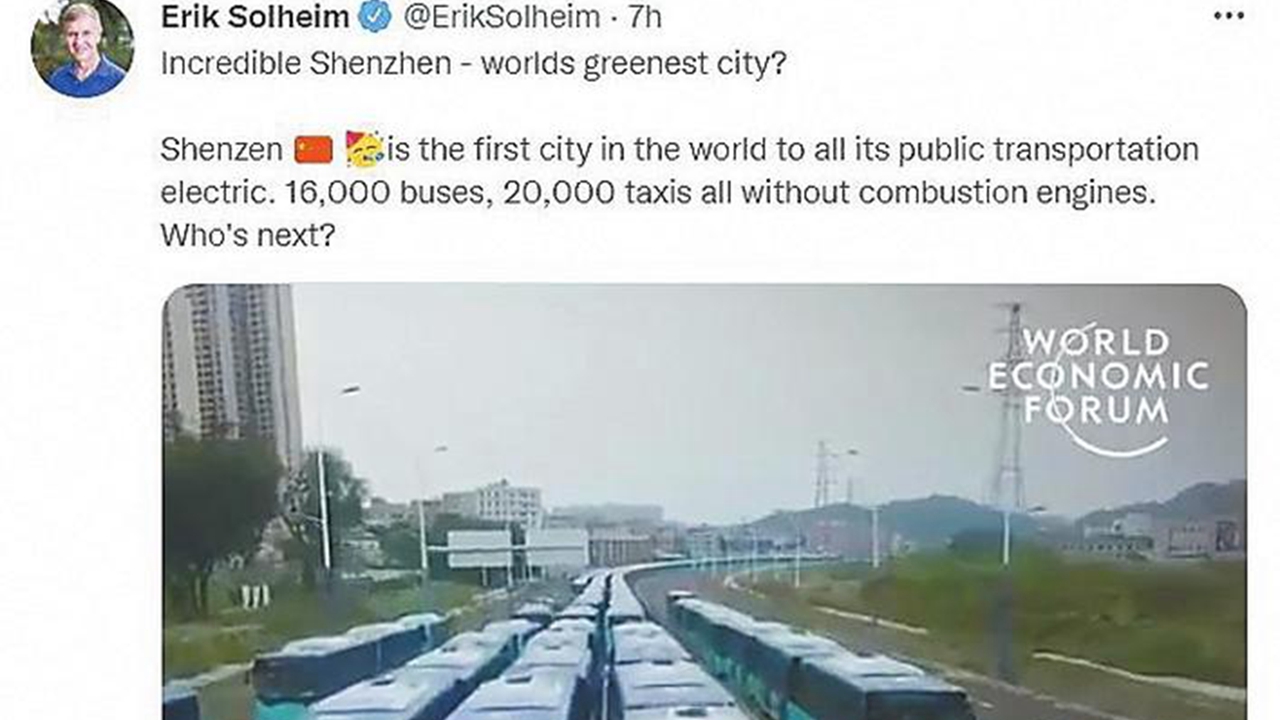Former UN senior official praises city's green efforts
In a tweet yesterday, Erik Solheim, former U.N. under-secretary-general, praised Shenzhen as the first city in the world where all its public transport has gone electric.

A screenshot of Erik Solheim’s tweet.
“In the city, 16,000 buses and 20,000 taxis without combustion engines,” Solheim said. “Who is next?”
He was the executive director of the United Nations Environment Program from 2016 to 2018 and is now president of Green Belt and Road Institute.
Solheim is a former Norwegian diplomat. He served in the Norwegian Government from 2005 to 2012 as a minister of international development and minister of environment.
A short video in Solheim’s tweet showed Shenzhen’s effort in becoming the first major city in the world with an all-electric fleet by replacing its old taxis and buses with electric ones. The video received 45,300 views and his tweet received 670 likes as of 8 p.m. yesterday.
The undated video, originally from wef.ch/watch, the World Economic Forum website’s video channel, quoted sources from Shenzhen Human Settlement and Environment Commission (now renamed Shenzhen Ecological Environment Bureau), saying that the city is now breathing its cleanest air in 15 years. It also quoted the European Environment Agency as saying that electric vehicles are still much better for the environment overall despite concerns on disposing batteries and much of the electricity uses is produced by coal power stations.
To improve air quality, Shenzhen has unveiled a series of measures over the past years, including replacing all its fuel-powered buses in 2017 and gradually replacing its cabs with electric-powered ones.
In November 2021, the World Bank recommended a report titled “Electrification of Public Transport: A Case Study of the Shenzhen Bus Group” to its 189 member countries to promote using electric buses, especially in developing countries. The report introduced Shenzhen Bus Group’s practices in developing green and sustainable transportation.
According to the report, since its electrification drive was launched, Shenzhen Bus Group has reduced 440,000 metric tons of carbon dioxide emissions on average a year and 217,900 liters of diesel, gasoline and waste water, and saved 150,000 metric tons of standard coal and 160 million liters of fuel. The group has built 112 charging stations with 1,888 charging poles for buses, and 12 charging stations with 1,052 charging poles for cabs.
The wide use of electric buses and cabs has played a significant role in improving air quality and constructing a beautiful Shenzhen, according to the city’s transport bureau.
Data from the ecology and environment bureau showed that the city’s average PM2.5 concentration was 18 micrograms per cubic meter in 2021, the lowest in its monitoring history. The city’s PM2.5 concentration has been lower than WHO’s Phase-II standard of 25 micrograms per cubic meter for three straight years, reaching the country’s Category I standard.